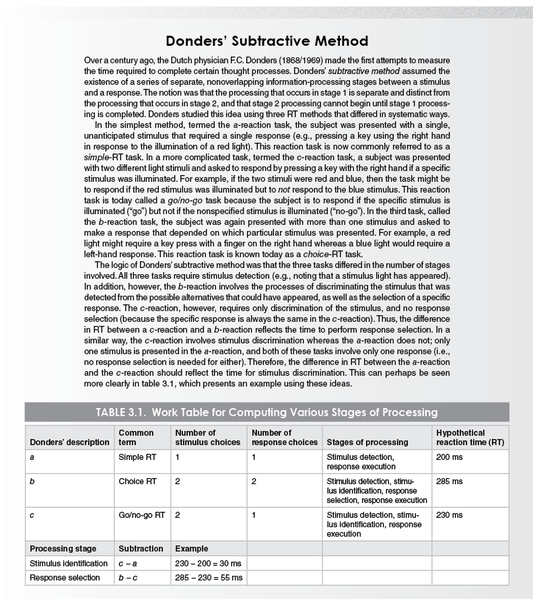|
Information processing important in producing skilled movement

Human functioning in the environment can be conceptualized and studied in many ways; one of the most popular is based on the fundamental notion that humans are processors of information. It is assumed that information is available in the environment; that the individual accepts this information into various "storage systems" called memory; and that the information is then "processed" for the purposes of perception, decision making, and action. Human information processing is based on a computer metaphor. According to this metaphor, we "take in" information from outside sources, just as a computer takes in information via input devices. That information undergoes transformations, uses other information stored in memory, and is subject to certain limitations based on the amount processed and the speed of processing that is available; again, this is similar to how a computer processes information. And lastly, the process by which information is "output" has many analogies to the computer—the processed information can result in various kinds of movement, just as a computer displays the results of its processing on a monitor or sends it elsewhere as an output. The goal of this chapter is to discuss information processing as it relates to human motor behavior (see also Marteniuk, 1976)—specifically how information is processed for the specific purpose of producing skilled
movement.
The Information-Processing Model
The model begins with the input of information from the environment through one or more of the sense organs, and then considers what happens to this information once it is inside the system. A typical "black box" model of the process is shown in figure 3.1. The individual is considered to be the box, and information enters the box from the environment. This information is then processed in various ways, eventually resulting in output as observable motor activity. This black box model prevailed in the stimulus–response (S-R) tradition (see chapter 1), in which researchers were primarily concerned with the relationship between what went into the box (the information, or stimuli) and the output from the box (the response). With the emergence of cognitive psychology, however, interest began to focus on the processes that occur within the box. Obviously, this is an abstract way to study human behavior because it concerns processes and events that are not directly observable. Knowledge about these processes is inferred from the overt behavior of the human under various experimental conditions. Events occurring inside the box can be studied in a variety of ways through use of the cognitive–psychological perspective. 

The most common approach to the study of information processing is to consider the durations of these various processes. This chronometric approach (see Posner, 1978) makes considerable use of the reaction-time (RT) method, whereby the chief measure of the subject’s behavior is the interval between the presentation of a stimulus and the beginning of the response. Many different information-processing activities occur during RT; but if the experiment is designed properly, so that the durations of most other processes are held constant, one can usually infer that an increase in RT resulting from some experimental variable was caused by the lengthening of the duration of a particular process. This chapter presents many examples of this type of research and thinking, and the chronometric approach to studying information processing constitutes a large portion of it. Later in the chapter we consider other aspects of information processing that are not necessarily studied using the chronometric approach but are particularly important in the performance of motor skills.
Although the notion of separate stages or processes between a stimulus and a response has been popularized by the cognitive–psychological viewpoint, the general concept of stages of processing is quite old, dating back to the research of Donders (1868/1969; see “Donders’ Subtractive Method”). This thinking, coupled with efforts from cognitive psychology (e.g., Kellogg, 2003; Sanders, 1980; Schweickert, 1993; Sternberg, 1969), has led to the view that various processing stages can be defined and that these stages can be either serial (sequential) or parallel (simultaneous) in nature.
Donders argued that with use of these methods, the durations of the stages of processing involved in stimulus discrimination and response selection, which are not directly observable, could be estimated in the laboratory. It is remarkable that these insights were developed in 1868, long predating the cognitive revolution in experimental psychology that made use of these and similar concepts.
Donders’ general methods and assumptions would later be revived in a classic paper by Saul Sternberg (1969) that generated considerable interest and further research, some of which was involved in understanding motor behavior (e.g., Sanders, 1980). Later thinking and research identified a number of flaws in Donders’ subtractive method (see Massaro, 1989, for an analysis of Donders’ and Sternberg’s logic and methods). But even so, Donders’ basic idea that we could examine the duration of stages by subtracting the RTs in various conditions was remarkable, given the time of his work, and served as the foundation for more modern analyses of human information processing.1 

Schmidt 59 art.PNG |
|

|
|